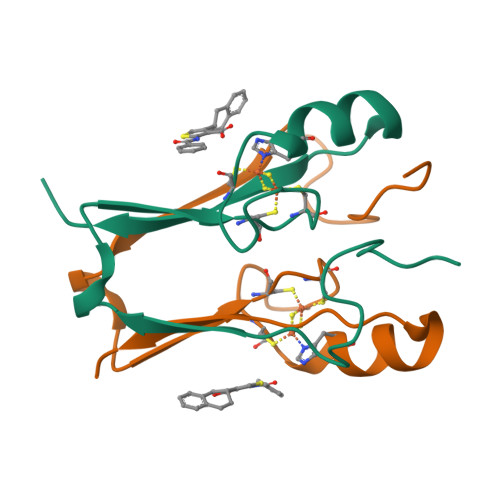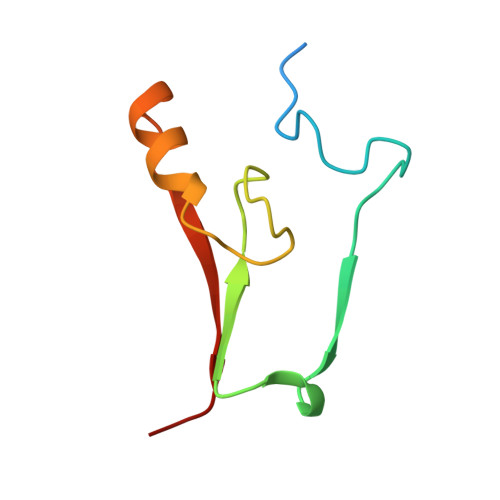An anti-diabetic drug targets NEET (CISD) proteins through destabilization of their [2Fe-2S] clusters.
Marjault, H.B., Karmi, O., Zuo, K., Michaeli, D., Eisenberg-Domovich, Y., Rossetti, G., de Chassey, B., Vonderscher, J., Cabantchik, I., Carloni, P., Mittler, R., Livnah, O., Meldrum, E., Nechushtai, R.(2022) Commun Biol 5: 437-437
- PubMed: 35538231
- DOI: https://doi.org/10.1038/s42003-022-03393-x
- Primary Citation of Related Structures:
7P0O, 7P0P - PubMed Abstract:
Elevated levels of mitochondrial iron and reactive oxygen species (ROS) accompany the progression of diabetes, negatively impacting insulin production and secretion from pancreatic cells. In search for a tool to reduce mitochondrial iron and ROS levels, we arrived at a molecule that destabilizes the [2Fe-2S] clusters of NEET proteins (M1). Treatment of db/db diabetic mice with M1 improved hyperglycemia, without the weight gain observed with alternative treatments such as rosiglitazone. The molecular interactions of M1 with the NEET proteins mNT and NAF-1 were determined by X-crystallography. The possibility of controlling diabetes by molecules that destabilize the [2Fe-2S] clusters of NEET proteins, thereby reducing iron-mediated oxidative stress, opens a new route for managing metabolic aberration such as in diabetes.
Organizational Affiliation:
The Alexander Silberman Institute of Life Science and The Wolfson Centre for Applied Structural Biology, Faculty of Science and Mathematics, The Edmond J. Safra Campus at Givat Ram, The Hebrew University of Jerusalem, Jerusalem, 91904, Israel.



















